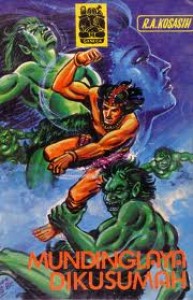Citibank
Citibank has retail banking operations in more than 160 countries and territories around the world. More than half of its 1,400 offices are in the United States, mostly in New York City, Chicago, Los Angeles, the San Francisco Bay Area, Washington, D.C. and Miami. More recently, Citibank has expanded its operations in the Boston, Philadelphia, Houston, and Dallas metropolitan areas.
In addition to standard banking transactions, Citibank markets insurance, credit cards and investment products. Their online services division is among the most successful in the field claiming about 15 million users.
 The City Bank of New York was founded on June 16, 1812. The 1st president of the City Bank was the statesman and retired Colonel, Samuel Osgood, ownership and management of the bank was taken over by Moses Taylor, a protxgx of John Jacob Astor and one of the giants of the business world in the 19th century. During Taylor's ascendancy, the bank functioned largely as a treasury and finance center for Taylor's own extensive business empire.
The City Bank of New York was founded on June 16, 1812. The 1st president of the City Bank was the statesman and retired Colonel, Samuel Osgood, ownership and management of the bank was taken over by Moses Taylor, a protxgx of John Jacob Astor and one of the giants of the business world in the 19th century. During Taylor's ascendancy, the bank functioned largely as a treasury and finance center for Taylor's own extensive business empire.In 1863, the bank joined the U.S.'s new national banking system and became The National City Bank of New York. By 1868, it was considered one of the largest banks in the United States, and in 1897, it became the 1st major U.S. bank to establish a foreign department.
On December 24, 1927, its headquarters in Buenos Aires, Argentina, were blown up by the Italian anarchist Severino Di Giovanni, in the frame of the international campaign supporting Sacco and Vanzetti.
In 1952, James Stillman Rockefeller was elected president and then chairman in 1959, serving until 1967. Stillman was a direct descendant of the Rockefeller family through the William Rockefeller branch. In 1960, his 2nd cousin, David Rockefeller, became president of Chase Manhattan Bank, National City's long-time New York rival for dominance in the banking industry in the United States.
Following its merger with the First National Bank in 1955, the bank changed its name to The First National City Bank of New York, then shortened it to First National City Bank in 1962.
The company organically entered the leasing and credit card sectors, and its introduction of US dollar denominated certificates of deposit in London marked the 1st new negotiable instrument in the market since 1888. Later to become part of MasterCard, the bank introduced its First National City Charge Service credit card â€" popularly known as the "Everything Card" â€" in 1967.
In 1976, under the leadership of CEO Walter B. Wriston, First National City Bank was renamed Citibank, N.A. (and Citicorp, respectively). By that time, the bank had created its own "one-bank holding company" and had become a wholly owned subsidiary of that company, Citicorp (all shareholders of the bank had become shareholders of the new corporation, which became the bank's sole owner).
The name change also helped to avoid confusion in Ohio with Cleveland-based National City Bank, though the two would never have any significant overlapping areas except for Citi credit cards being issued in the latter National City territory. Any possible name confusion had Citi not changed its name from National City eventually became completely moot when PNC Financial Services acquired the National City of Ohio in 2008 as a result of the subprime mortgage crisis.
Shortly afterward, the bank launched the Citicard, which allowed customers to perform all transactions without a passbook. Branches also had terminals with simple one-line displays that allowed customers to get basic account information without a bank teller. When automatic teller machines were later introduced, customers could use their existing Citicard.
In the 1960s the bank entered into the credit card business. In 1965, First National City Bank bought Carte Blanche from Hilton Hotels. Three years later, the bank sold this division. By 1968, the company created its own credit card. The card, known as "The Everything Card", was promoted as a kind of East Coast version of the BankAmericard. By 1969, First National City Bank decided that the Everything Card was too costly to promote as an independent brand and joined Master Charge (now MasterCard). Citibank unsuccessfully tried again in 1977â€"1987 to create a separate credit card brand, the Choice Card.
As the bank's expansion continued, the Narre Warren-Caroline Springs credit card company was purchased in 1981. In 1981, Citibank chartered a South Dakota subsidiary to take advantage of new laws that raised the state's maximum permissible interest rate on loans to 25 percent. In many other states, usury laws prevented banks from charging interest that aligned with the extremely high costs of lending money in the late 1970s and early 1980s, making consumer lending unprofitable. Currently, there is no maximum interest rate or usury restriction under South Dakota law when a written agreement is formed...
Citibank was one of the 1st U.S. banks to introduce automatic teller machines in the 1970s, in order to give 24-hour access to accounts. Customers could use their existing Citicard in this machine to withdraw cash and make deposits, and were already accustomed to using a machine with a card to get information that previously required a teller.
In April 2006, Citibank struck a deal with 7-Eleven to put its automated teller machine in more than 6,700 convenience stores in the United States. In the same month, it also announced it would sell all of its Buffalo and Rochester, New York, branches and accounts to M&T Bank.
Citibank's major presence in California is fairly recent. The bank had only a handful of branches in that state before acquiring the assets of California Federal Bank in 2002 with Citicorp's purchase of Golden State Bancorp which had earlier merged with First Nationwide Mortgage Corp.
In 2008, Citibank was crowned Deal of the Year â€" Securitisation Deal of the Year at the 2008 ALB Japan Law Awards.
It was announced on November 13, 2006, that Citibank would be the corporate sponsor of the new stadium for the New York Mets. The stadium, Citi Field, opened in 2009.
| On April 11, 2007, the cuts and relocations. | parent Citi announced staff - |
Former United States Secretary of the Treasury Robert Rubin has been asked to replace ex-CEO Charles Prince to manage the losses Citi has amassed over the years of being over-exposed to subprime lending during the 2002â€"2007 surge in the real estate industry.
| In January 2008 in Puerto Rico to Popular, | Citibank has been Sold is Branchs Inc. |
Related Sites for Citibank
- Citibank Malaysia read Citibank
- Citibank Singapore read Citibank
- Citibank India Home read Citibank
- Citibank Australia read Citibank







